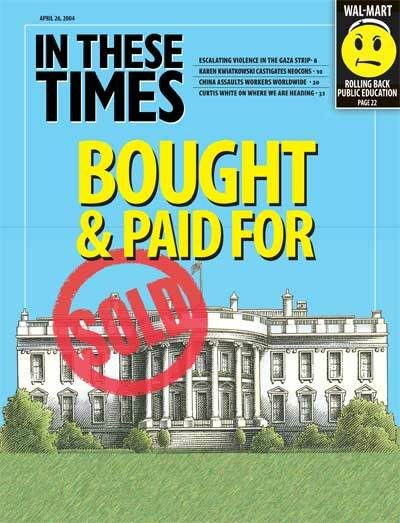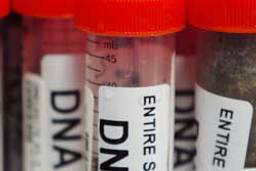You’ve got bladder cancer. Or maybe it’s chronic bronchitis. Same difference, right? Both are extremely painful and debilitating but not always fatal; both have environmental triggers that governmental regulation can prevent. So they’re basically the same thing — at least according to the Bush administration, which uses a crude array of malleable statistics to decide whether measures to protect the ecology and the public are worthwhile in economic terms.
Unlike a terminal disease, which is worth spending several million dollars to prevent, your disease — either one — is worth dropping only about $260,000 to halt.
Such decision-making happens under the innocuous-sounding banner of “cost-benefit analysis.” Cold-blooded calculations like this come under heavy fire in Priceless, a new book by economist Frank Ackerman and environmental law professor Lisa Heinzerling.
Priceless explains why your disease isn’t that important, at least to this administration. Because it probably won’t kill you, you’ll likely live to work — and contribute to the economy. So don’t worry, they say, and quit your whining about painful urination (or troubled breathing). And definitely shut your trap if you’re not white, because you probably don’t earn as much and thus won’t be as valuable to the country’s growth prospects. And absolutely zip it if you’re elderly, given you have fewer years of productivity than a younger person.
Even if you are a spry, white male, though, the odds of a regulatory remedy aren’t good. Tough water quality standards that might prevent future bladder cancers (or air-quality standards that might prevent chronic bronchitis) also prevent things like wood-burning energy plants that employ people.
Protecting air and water has economic benefits, too, but federal regulators choose not to recognize them. The perverse logic pervading their calculations tends to ignore the positive aspects of regulation — like avoiding swollen healthcare costs in the long run — and focuses only on the drawbacks, which are often short-term.
Priceless tells a gripping story about how solid science has been shoved to the backburner by bean counters with ideological blinders. The book reveals in stark detail the shady accounting practices that go into devaluing the substantial contribution environmental regulations make to public health — and how the Bush administration at every turn has undermined common-sense measures supported by most scientists.
The problems with a cost-benefit approach predate the current administration. Before George W. Bush appointed his first critic of regulation to a federal post, the growing cabal of anti-scientists used this analytic tool to declare that we should be more concerned with such issues as murderous herds of deer than with potential terrorist attacks.
Why? Cost-benefit analysis uses a count-the-bodies formulation that has inherent blind spots. When the influential Robert Hahn of the AEI-Brookings Joint Center for Regulatory Studies did a cost-benefit study of enhanced airport security measures in 1996, an average of 37 people annually died from terrorism.
Looking at these figures, Hahn concluded that improving airport security wasn’t worth the costs. Similarly, toxic waste dumps were a relatively small problem compared to “the millions of deer that roam the nations highways … [causing] traffic injuries and deaths,” as a 1999 Stanford Law Review article put it.
Of course, there was a possibility that terrorism would increase, just as there was the possibility that toxic waste dumps could create future cancer epidemics — just as there is a solid chance that human-caused climate disruption will create devastating impacts. But cost-benefit analysis rarely considers this because it doesn’t have to. Because risk analysis is based only on existing numbers of deaths caused by particular events, and often erroneously projects worst-case death tolls, it can’t provide the intellectual tools to prepare for future catastrophes. Used this way, Priceless argues, cost-benefit analysis makes us blind (perhaps willfully so) to pressing public health issues.
The book’s great strength is its in-depth explanation of the cost-benefit evaluation process. While sometimes descending into policy wonk lingo, Priceless makes economists’ arcane vocabulary as accessible as possible, taking the reader into a world where life is systematically devalued through accounting tricks.
These tricks, as Ackerman and Heinzerling show, often mean weighing total costs against utterly incomplete benefits. Refusing to consider future generations fully human is one telling example — they get only a small fraction of “benefit” consideration so any policy that would predominantly benefit our children and grandchildren is discounted.
At best, this reveals a fatal flaw in the system. At worst, it reveals cynical politics at work under the guise of objectivity. Don’t like a regulation? Declare it to be economically inefficient. What if you can’t prove that, given the regulation actually is worth the cost? Cook the numbers to consider only the short-term impact so it looks otherwise. In theory and in practice, this demonstrates structural biases against regulation in and of itself.
While Priceless is an invaluable in-depth tool for understanding how this type of policymaking corrupts meaningful research, a recent report from the Union of Concerned Scientists (UCS) provides a quick and punchy summary of this shortsighted viewpoint and its human impact.
The UCS study — signed by more than 60 top-tier scientists and released in February — found “a well-established pattern of suppression and distortion of scientific findings by high-ranking Bush administration political appointees,” and that “the scope and scale of the manipulation, suppression and misrepresentation of science by the Bush administration is unprecedented.” It showcases, among many other examples, a U.S. Department of Agriculture microbiologist who was prevented from publicizing his work on harmful airborne bacteria. These bacteria, generated by farm waste, pose grave threats to human health, but Dr. James Zahn’s research was suppressed.
What is most striking about reading Priceless and the UCS report in succession is the stunning lack of overlap in the source material. Though each document cites myriad examples of science being suppressed — ranging from work on air and water pollution to toxic waste, from endangered species protection to workplace safety — almost no anecdotes are repeated. This spotlights just how many documented incidents of open hostility to truth seeking we’ve seen in this administration.
Taken together, they paint a chilling picture of an administration more concerned with consolidating its power than national security or the health and welfare of Americans. It is often said that truth is the first casualty of war. Nowhere is this truer than in the Bush administration’s war on science.








